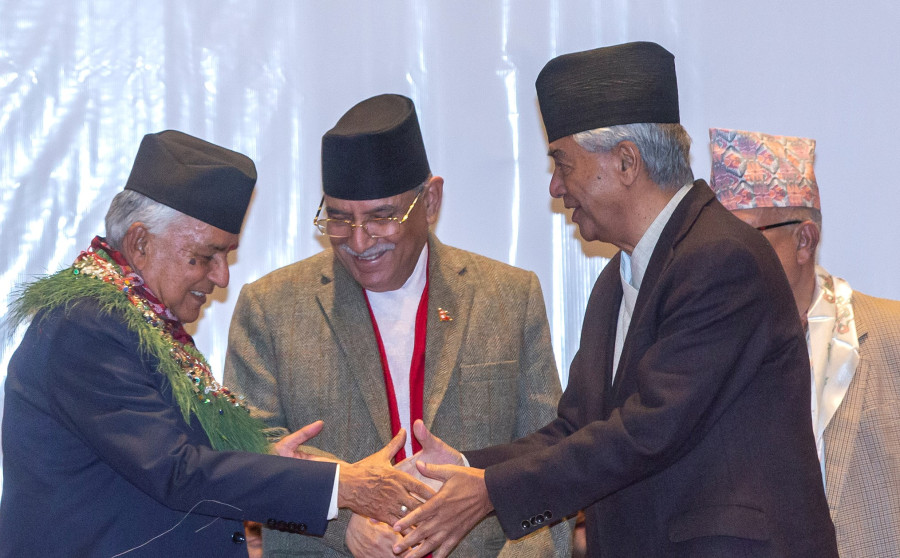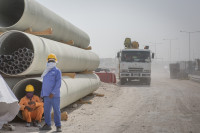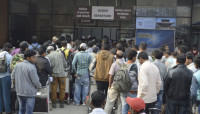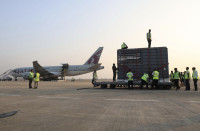Columns
Unfinished political reform
The practice of internal democracy in our major political parties is essentially absent or a sham.
Achyut Wagle
Political reform is generally a continuous, incremental process of institutionalising the “post-revolution” radical change in regime, ideally, from an undemocratic to a democratic set of political forces and rulers. For legendary American political scientist of the 20th century, Samuel P Huntington, political reform meant “the peaceful—hence gradual, hence usually negotiated—enhancement of liberty, justice, equality, democracy, and responsibility in politics”. Political reform is often synonymous with promoting and consolidating the “democratisation” of the state.
Nepal, during her seven-plus decade-long modern history, witnessed at least five instances of radical change in the political system. In 1951, a democratic revolution overthrew the 104-long Rana oligarchy. In 1960, King Mahendra, through a coup d'état deposed the first democratically elected government led by BP Koirala and banned political parties. Then, an absolute monarchy ruled the nation for the next 30 years. In 1990, a popular revolt reinstated multi-party democracy and rendered the king a ceremonial head of the state. Another revolt in 2007-08 deposed the monarch and made the country a republic. A new constitution in 2015 implemented federalism and restructured the erstwhile unitary state with significant devolution of power to the subnational units.
Despite so many changes in regime, Nepal’s destiny as an impoverished nation with perennial crisis of governance, poor public service delivery and elusive prosperity does not seem to have fundamentally altered.
Missing links
What went wrong? What are the missing links between these ostensibly bold political changes and the feeble socioeconomic outcomes? There may not be a straight answer to these questions, but history shows that Nepali politics focused more on changing the regime than curing “chronic” ills in the affairs of state. Political reform to institutionalise democracy and create socioeconomic transformation remained ignored.
The agenda of political reform is absent in the national discourse or in the manifestos of the political parties. Political reform would warrant the reorganisation of the governing system as per the objective of the party’s ideology. But in the post-modern “politics of pragmatism”, ideology is being seen as an obsolete and unnecessary burden on the electorate. The idea is that the basis of governance and policymaking should be demand-driven and evidence-based. This approach perhaps explains the rise of new forces like the Rastriya Swatantra Party with vowed dispensability of political metanarratives as party ideology. Since Nepal has failed to take any meaningful step in political reform, the debate over ideology is, therefore, spurious.
Political reform is an infinitely broad concept that may encapsulate all aspects of desperation, statecraft and the outcome of governance. Nevertheless, in Nepal, four key components of reform—internal democracy in the parties, representation in policymaking, federal devolution and good governance—are essential for political stability and efficiency of the state.
The practice of internal democracy in any major political party is essentially absent or is a mere sham. A platform to deliberate on the country’s societal and economic problems to reach a democratically formed viewpoint which has institution-wide ownership is conspicuously missing among the parties. The chieftains of the so-called democratic parties, including the Nepali Congress, CPN-UML and CPN (Maoist Centre), exercise absolute decision-making power. Major decisions on forming alliances or taking strategic steps are barely taken through open deliberations. Parliamentarians only obey the instructions from these “bosses” instead of contributing to “free and open” legislative debates. Alternative points of view are severely and selectively penalised in all political parties. Extreme centralisation of power, often in a single person, remains a common intent and practice. In the absence of internal democracy in the parties, their distinguishable features have ceased to exist, and a common identity of “identitylessness” has been fortified.
True representation of marginalised minorities, women, Dalits and the voiceless in policymaking opportunities is persistently being compromised despite several constitutional and legal arrangements. Nepotism, favouritism and clientelism have marred the very spirit of true representation. “Body representation” of a nemesis from the excluded group to meet the obligatory criteria has defeated the essence of “issue representation”.
Federal hegemony
Federal devolution of state power to provincial and municipal bodies has not only been extremely tardy, but also often exhibits recentralisation of the intents of the political and bureaucratic elites. Its adverse impacts on the functional aspect are mirrored in poor public financial management and pathetic growth outcomes year after year. The subnational governments seem to be lost in the haze of federal hegemony when it comes to executing fiscal federalism, enacting their own laws and recruiting personnel to implement development projects.
The most excruciating toll of the delayed political reform is exhibited in poor governance in every aspect of national life. Corruption is rampant and even more alarming is the growing impunity. Meritocracy takes a backseat. Conflict of interest at the highest decision-making levels is pervasive. The “ethical economy” takes a volte-face. The most telling impact of slow reform is on public service delivery, particularly in far-flung areas. Therefore, only replacing the political superstructure through revolution-like upheavals without systematically changing the state mechanism through comprehensive reform will not ensure democratic stability nor economic prosperity. Meaningful political reform must begin somewhere, now.




 18.12°C Kathmandu
18.12°C Kathmandu













%20(1).jpg&w=300&height=200)

